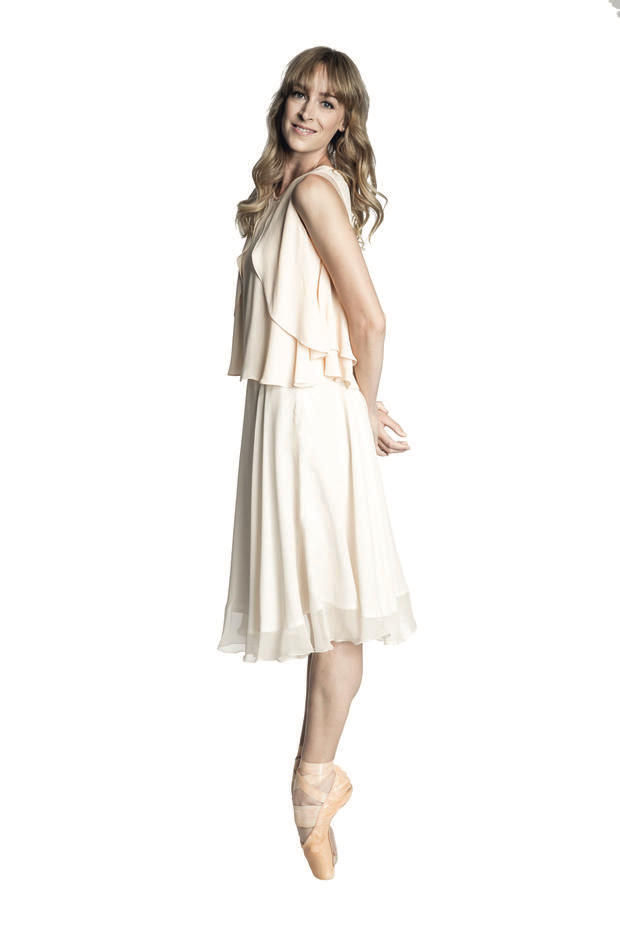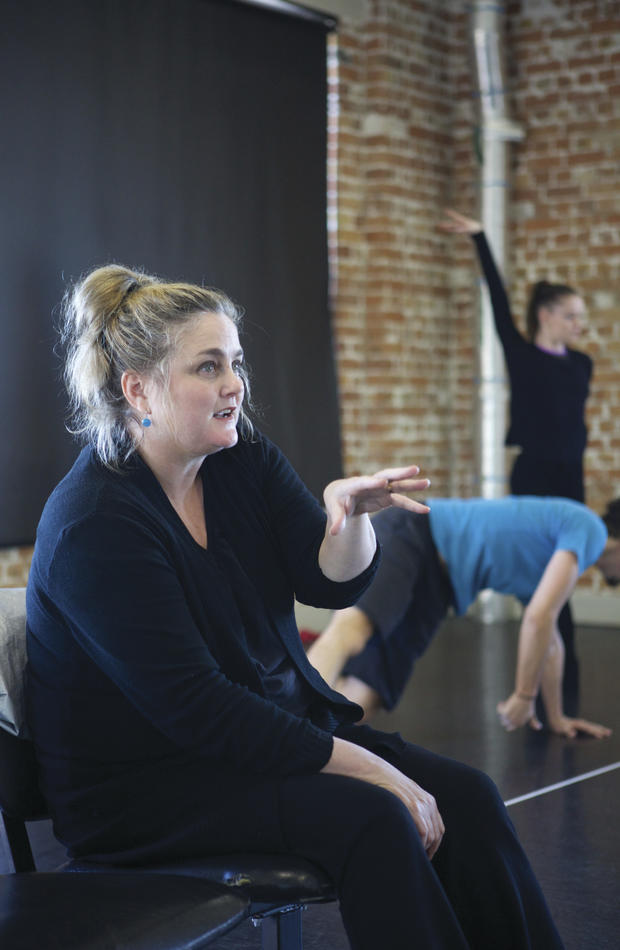The number of female classical choreographers in Australia is very small. Karen van Ulzen finds out why.
This article was first published in the June/July 2017 issue of Dance Australia.

IN August, the Australian Ballet will perform Alice Topp's latest ballet, Little Atlas, in Melbourne. Topp is a coryphee and the ballet is her fifth creation for the company. Little Atlas first premiered in May in Sydney last year, commissioned for a main season triple bill on the strength of other works she has created for the company's annual choreographic season, "Bodytorque". To have a ballet in a “main stage” season is a big achievement in a large company which regularly commissions choreographic greats from around the world. Little Atlas received strong reviews – Limelight magazine said it had the “wow” factor.
Topp is a rarity – a female classical choreographer. In an artform that is otherwise so dominated by women, it is strange that female choreographers are so far and few between. In Australia, you can count them on one hand. As Topp herself says: “I have been in the company for 11 years, but have never had the privilege of actually working with a woman choreographer.” The last work that was created for the Australian Ballet by a woman was Mirror Mirror in 2000.
Why is this so? It’s not as though women cannot choreograph. The contemporary scene is teeming with creative women, leading their own troupes and creating their own work. In the past, women such as Laurel Martyn and Ninette de Valois choreographed almost as a matter of course.
The creator of Mirror Mirror, Natalie Weir, was at that point the Australian Ballet's choreographer-in-residence. She is now the artistic director of Expressions Dance Company in Brisbane. Expressions is contemporary, but Weir choreographs successfully in the classical field as well. Most recently she was invited by the Queensland Ballet to choreograph We Who are Left for its “Lest We Forget” program last year. She has been invited by two US companies to choreograph all-female seasons in the near future. And all this while raising three sons! Weir does not have a clear answer for why she has so few female colleagues. “Maybe it's because the females working in the ballet companies generally are focused on their careers as dancers,” she speculates, “and when they retire from their dancing it's usually, not always, to have a family. So they don’t fall into pursuing a choreographic career.”

Contemporary choreography, she goes on, by its essence requires greater collaboration between dancer and choreographer. With classical work, the dancers generally learn repertoire – steps that have already been created in the head of the choreographer. The aim is to learn it and perform it to the best possible standard, often following in footsteps that were laid many decades ago.
On the other hand, Weir says, “within a contemporary company dancers work collaboratively with the choreographers, and the dancers are often generating the movement, so they feel like they are choreographing from a very early stage in their career, and a lot of them then start pursuing choreographic opportunities quite early while they’re still dancing.
Contemporary companies do offer emerging artists more opportunities [than classical companies] to choreograph, more platforms.”
That's where the Australian Ballet's “Bodytorque” was so integral to Topp's development. The program is geared specifically to allow company dancers to try their hand at making a work, while supported by the full company infrastructure.
“It wasn't an idea or thing I always wanted to do. I basically was approached by David. I think it had been a few years since [the program] had a female choreographer. [Music director] Nicolette [Fraillon] put my name forward. I do not know why; I think she just thought I would have a crack.
“So I just thought, why not? That's kind of how it happened!” She laughs. “Which I realise is a bit unorthodox. If I hadn't been encouraged it wouldn't have happened.”
As it turned out, she found it “the most fulfilling experience”.
“I learned so much about the dancers, the way they think, and I developed such a passion. That initial piece really opened up the door to the possibilities for me in terms of choreography. It broke down those fears about failing and putting your ideas out there.”
Developing your own voice and dance language is not something that is really cultivated. It is more like, okay, my job for the next three months is to stay in line.
Natalie Weir agrees: “Choreography is something that has to be practised. The only way to learn is to do it. It's a whole different talent. It has to be trained and given a whole lot of time and focus and energy. It's so easy to put something on stage that flops.”
Even so, both men and women go through the same training process, so why the difference? Topp believes one large factor is time, or the lack of it. “We do so many shows a year – 180 or something like that. And we are constantly working on new ballets. For women especially, with ballets such as Swan Lake, La Bayadere, Giselle and those classics, women are on for the duration of the three-hour show every night. Women have less flexibility than men to go and have their creative time and come up with dialogue for rehearsal the next day."
Time is certainly an important factor. Looking at the careers of the classical greats like MacMillan, Ashton, Kylian, Balanchine – they often were not prominent as dancers or deeply ensconced in dance company life. Some of the best choreographers seem to benefit from coming to the field late or having a more outside viewpoint – free from the day-today business of perfecting their fifth positions and arabesque lines, they are able to see the potential of ballet as a whole.

Natalie Weir is a case in point. She knew quite early that her interest lay in choreography and has been choreographing since she was twenty. Though she started her career with Expressions education team, she has not been a full-time member of a classical company and freelanced as a choreographer for many years, until finally returning to Expressions as director.
Alice Topp brings up another interesting angle. She points out that the female classical ballet dancer is valued for her conformity, her ability to literally fit into a group, subsuming her personality into the requirements of the form, shape and pattern of the ballet. It is a daily routine that doesn't encourage personal expression.
"It's about breaking down those fears about failing. And putting your ideas out there."
"Those ballets, like Kingdom of the Shades, the wilis in Giselle: a lot of it is all about unison. It's about being in line, in that space, your leg is the same height, eyeballing everyone – it's about being as one. Twenty-four swans; one wing. So there's not a lot of time for you to develop your own voice – to think, how do I want to do this? Because you’re not always given that freedom. Developing your own voice and dance language is not something that is really cultivated. It is more like, okay, my job for the next three months is to stay in line. That's what you work for.”
This chimes with comments by Crystal Pite, the French-Canadian choreographer and associate choreographer for Netherlands Dance Theatre, who was recently commissioned to create a new ballet for England's Royal Ballet as part of a triple bill alongside David Dawson and Christopher Wheeldon. It is the first new work by female choreographer at the Royal
Ballet for almost two decades. She was quoted in an article by Philippa Hawker in The Australian newspaper as saying:
"A young boy who wants to study ballet, who is willing to risk the ridicule of his peers and maybe push against his family to pursue a dance as a career, he is already a kind of maverick, a risk taker, someone who is willing to put himself out there.
“These are qualities that make for leaders and choreographers; a girl in ballet, on the other hand, doesn't have to be a rebel. She is prized instead for her ability to conform and be obedient and do things in a certain way."
Her comments imply also that the classical male dancer has learnt a certain toughness of character, which gives him the confidence classical female dancers possibly lack. “It's about breaking down those fears about failing. And putting your ideas out there. Because as dancers we are representing somebody else's ideas. When it's your own [ideas], you're responsible for, that's a different pressure,” Topp says.
Time, space, opportunity and the encouragement to find an independent voice: these are all areas that need to be provided to women if the classical ballet world is to cultivate female choreographers. “I'd love for more women to have a go,” Topp says. “Until you have a go you don't know how you're going to feel about it.
“It can be really intimidating, but only by making art can you learn – it gives you forks in the road. You won't know what you can do until you put yourself in that position.”
Balanchine once said: "Ballet is a female thing. It is woman." But he clearly meant woman as the dancer, not as the creator. He was speaking of the woman as Muse, that 19th-century poetic notion of the woman as the inspirer, the man as the inspired – the woman as the admired object of beauty, the man as the genius creator. But time has moved on. Classical ballet women – take Topp's advice and “go for it”. Make yourselves exceptions to the rule. It is absurd, in the 21st century, that an artistic field is so poorly represented by the female viewpoint.
Top: Alice Topp's Little Atlas. Photo: Daniel Boud.



